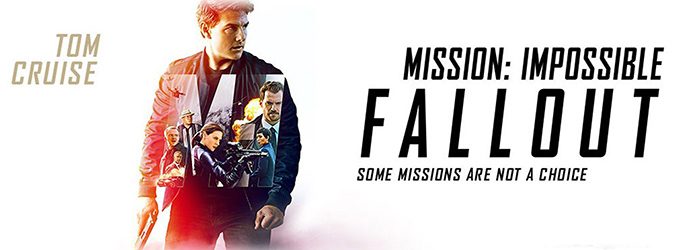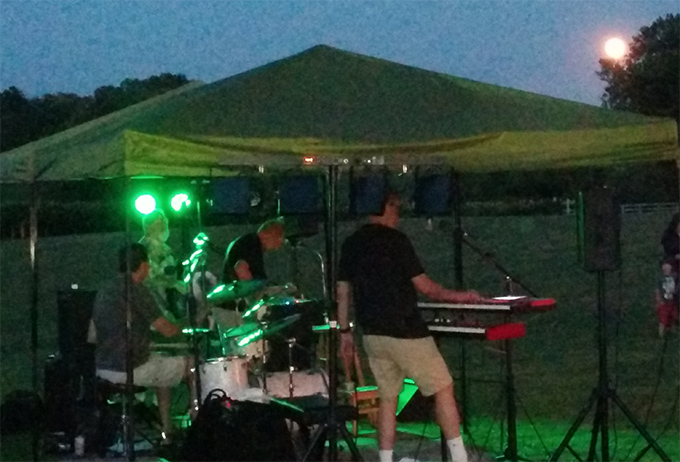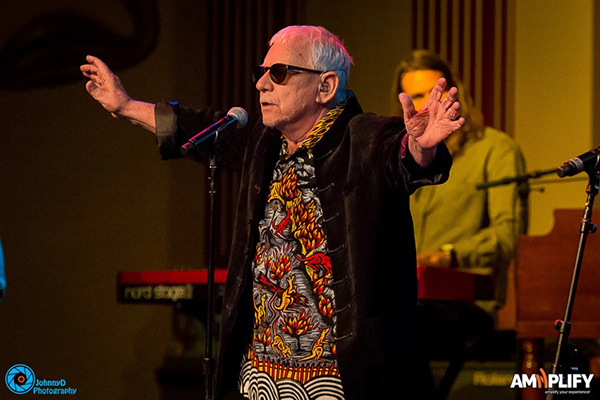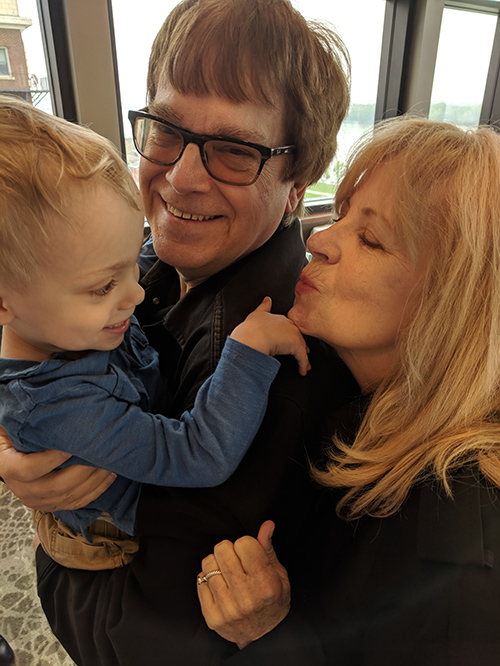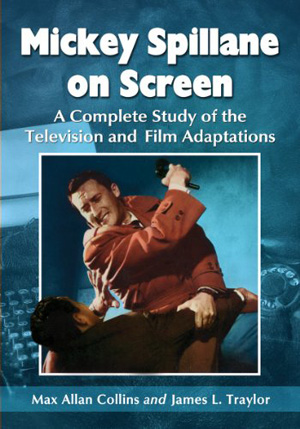This past Saturday evening, Barb and I headed to Riverside, Iowa (future birthplace of Captain James T. Kirk) to the casino resort there for a concert by Eric Burdon and the Animals.
The Riverside Casino and Golf Resort is a great venue that brings in major acts (within half an hour of our home!) and some of them, like this one (and the Happy Together Tour a while back), are top stars of the Baby Boomers’ youth. For example, they have Micky Dolenz and Paul Lindsay coming up on September 29. Crusin’ has appeared on the Riverside Casino’s smaller stage three times, and it’s always a thrill to get to entertain there.
The house for Burdon was packed and enthusiastic…also old. So is Burdon, at 73 a kind of wonderful train wreck, a grizzled, gifted survivor of the British Invasion. He’s a small but formidable man, and the only real Animal on stage – he’s surrounded by kids, relatively speaking, who mostly serve him well. Despite a cold that he apologized for, as it gave his voice even more gravel, he performed well, enthusiastically and long – an hour and a half, no break – giving the crowd most of his hits, the only really major omission being “It’s My Life.”
My only complaint is the current Animals line-up – the bass needs more definition, and the keyboards more balls. I wanted to rush the stage, yelling, “Let a man in!”, when the keyboard guy played piano all through “We Gotta Get Outa This Place.” His piano keyboard is a Nord, and a Nord is one of my two keyboards and a fine instrument…but right behind him was a Hammond B-3!
The Animals’ sound, in its first and most popular incarnation, was driven by organ – either Vox or Hammond, with Alan Price its famous keyboard player. Not bringing that Hammond into full, robust play was a blunder.
Okay, I realize I’m seeing that through my end of the telescope, and I don’t want to indicate the evening in Eric Burdon’s legendary presence wasn’t a wonderful thing, a real privilege. Burdon is the kind of dedicated singer who can bring brand-new passion to a song he’s sung literally hundreds and hundreds of times, every time.
Burdon is as much as anyone – and I include Mick Jagger – responsible for bringing the blues to white America (and the UK), exposing my generation to the joys and rewards of the African-American musical experience, sending us to Bo Diddley and Muddy Waters and John Lee Hooker, among many others. Is there a more unlikely smash hit single of the sixties than “House of the Rising Sun”?
Here’s a cool interview with Burdon done just before the Riverside appearance.
And now, because absolutely no one asked for it, here is my list of my 10 Most Influential Albums of the Sixties. These are the actual albums I listened to most, as opposed to my assembling something reflecting what I should be listing, i.e., black artists, female artists, and not just white boys (mostly British). But it was the British Invasion that sent me down a path that would have me still playing rock ‘n’ roll at 70 (thankfully not for a fulltime living).
1. Rubber Soul – the Beatles. 1965 (December). This list could be nothing but Beatles, as their albums and singles were what I listened to most. Rubber Soul is where the group blossoms into something even more special. I am in a minority, but I like least The White Album and everything that follows.
2. Along Comes the Association – The Association. 1966. Still, perhaps, their finest hour, with the possible exception of the follow-up, Renaissance. Includes “Enter the Young,” “Along Comes Mary,” “Cherish” and more. Barb and I saw them perform more often than other band of the era, the greatest vocal group that was also a fine rock band.
3. The Zombies – the Zombies. 1965. Their wonderful early material is here in this American release, including my two favorite singles of the ‘60s, “She’s Not There” and “Tell Her No.” Colin Blunstone’s breathy, heart-felt singing melds with Rod Argent’s great, inspiring (to me) piano and organ – this is pure pop bliss.
4. Them Again – Them. 1966 (January). My favorite Van Morrison material almost all dates to his days fronting Them. This second album made not much of a splash in the USA, but it’s great, with “Could You, Would You,” “Call My Name” and “I Can Only Give You Everything” outstanding.
5. Animal Tracks – The Animals. 1965. Their third album (a U.S. mongrel), it features “We Gotta Get Outa This Place,” which was Muscatine High School’s senior class of ‘66 song. As a listener caught up in the pop of the Beatles, the jolt of r & b from Eric Burdon (and also Van Morrison with Them) was the start of an education.
6. It Ain’t Me Babe – the Turtles. Before “Happy Together,” the Turtles were a folk-rock band with an edge, the Byrds but not precious. This album has not only the title track but a pre-Sinatra, rocking “It Was a Very Good Year,” P.F. Sloan’s “Let Me Be,” and some nice Dylan covers. Opening for Flo and Eddie (twice) was a real career highlight for this weathered garage band rocker.
7. Midnight Ride – Paul Revere and the Raiders. 1967. This was the last album that the Raiders – a great bar band from the Pacific Northwest – actually played on, with the famous Wrecking Crew taking over after, so the group could tour and tour and tour. This was their Rubber Soul, with such great tracks as “Kicks,” “(I’m Not Your) Steppin’ Stone” and “Louie Go Home” (a sequel to “Louie Louie,” their version have been hijacked by another local band).
8. Eighteen Yellow Roses – Bobby Darin. 1963. My obsession with Bobby Darin was not entirely blotted out by the British Invasion. This album has Darin’s hit title track and a bunch of covers, including “On Broadway” and “Can’t Get Used to Losing You.” Not a major album, but I listened to it a lot. Ditto his later (1968) Bobby Darin Born Walden Robert Cassotto, a singer-songwriter effort of personal folk rock and protest material in his Bob Darin phase. My band played “Long Line Rider.”
9. Younger Than Yesterday– The Byrds. 1967. Such an influential band. I recall playing “Turn, Turn, Turn” at a frat party in Iowa City around ‘68 and the frat brothers having us play it over and over and over. Guitarist Bruce Peters of the Daybreakers had a 12-string Rickenbacker to give it the real McGuinn flavor. That track isn’t on this album, which is the “So You Wanna Be a Rock ‘n Roll Star” LP, with such wonderful songs/performances as “Have You Seen Her Face” and “My Back Pages.” This was our late bass player Chuck Bunn’s favorite album.
10. Pet Sounds – The Beach Boys. 1966. The great American answer to the question posed by the British Invasion: which of you stateside losers can compete with us? Well, these guys. It’s possibly the best, most beautiful rock album ever written, produced and performed.
Looking at this list – which is in no particular order – I realize how much of it centers around 1966, and just before and just after. Subjectively, it suggests that the music that appeared as I came of age – if 17 or 18 is coming of age – happened to be some of the best popular music ever…or was it just the stuff (objectively speaking) that was out when I was a junior and senior in high school?
Let me mention, too, that if this list continued further, the albums from my college years – everything from the frankly poppy Monkees to the likes of Vanilla Fudge, Cream and Deep Purple – would be on it.
So. Now that you’ve read it…aren’t you glad you didn’t ask?
* * *
Barb and I thoroughly enjoyed Deadpool 2. We had discovered the first DP (so speak) movie on home video, and found it a hoot, if dark. This one isn’t quite as dark, and is even more joke-laden than the previous. There are smart people I know (like Terry Beatty) who hated the first Deadpool and are unlikely to try the second (and probably shouldn’t). But I enjoy the way the Deadpool films send up the super-hero genre while celebrating it – that it points out and revels in the absurdities of the genre (particularly the movie version of superhero comics) and still manages to be a terrific superhero movie. Deadpool 2, for all its smart-ass nastiness, even has a good heart.
* * *
Here’s a fun, quirky review of Quarry’s Climax. I think the reviewer doesn’t quite get Quarry’s view of women (or humanity, actually), but he likes the book, which is what matters. Quarry has contempt for the entire human race, including himself, but he isn’t a dick about it.
And a nice Quarry write-up is here, in this look at post-Vietnam crime novels.
M.A.C.
